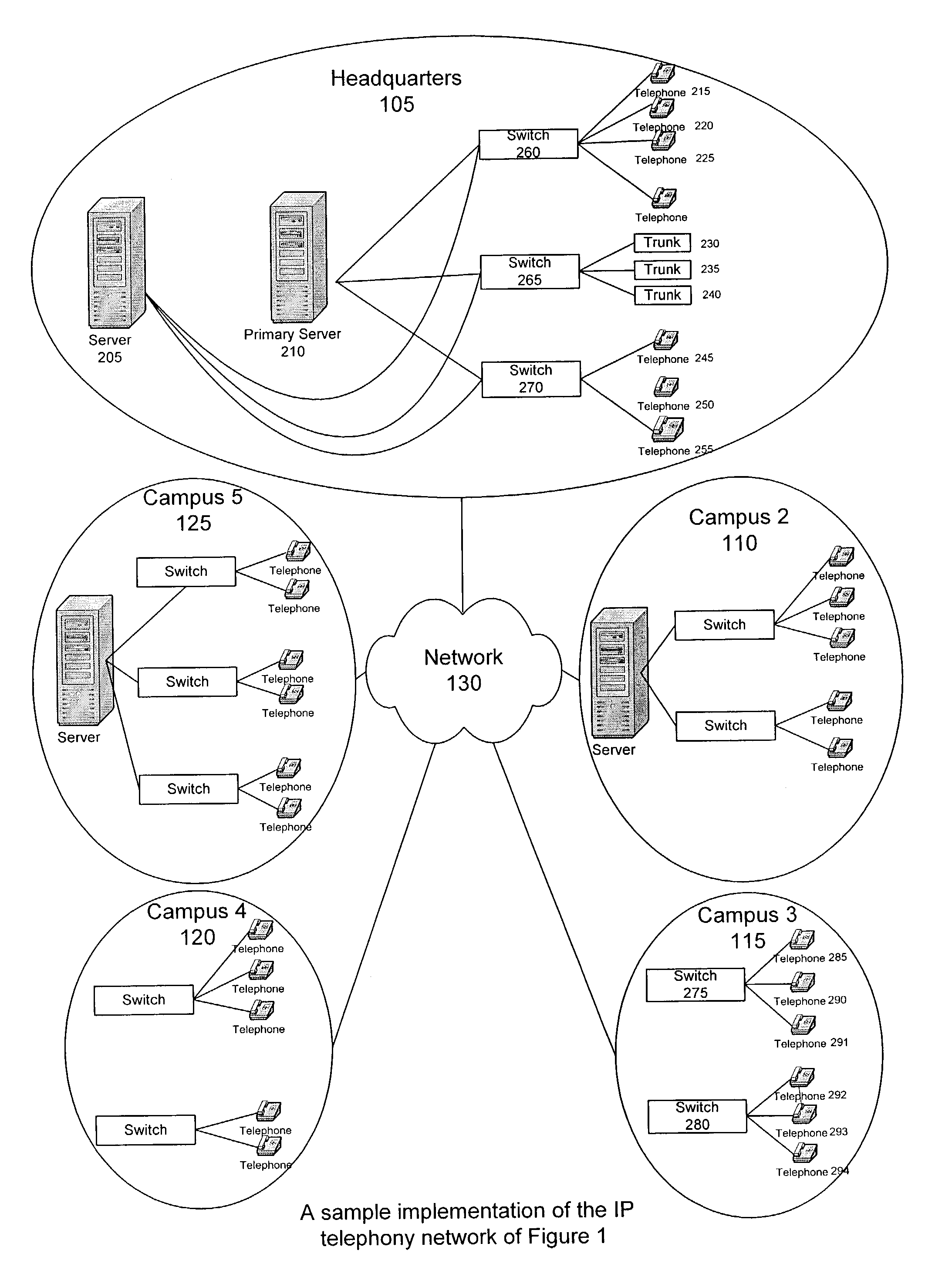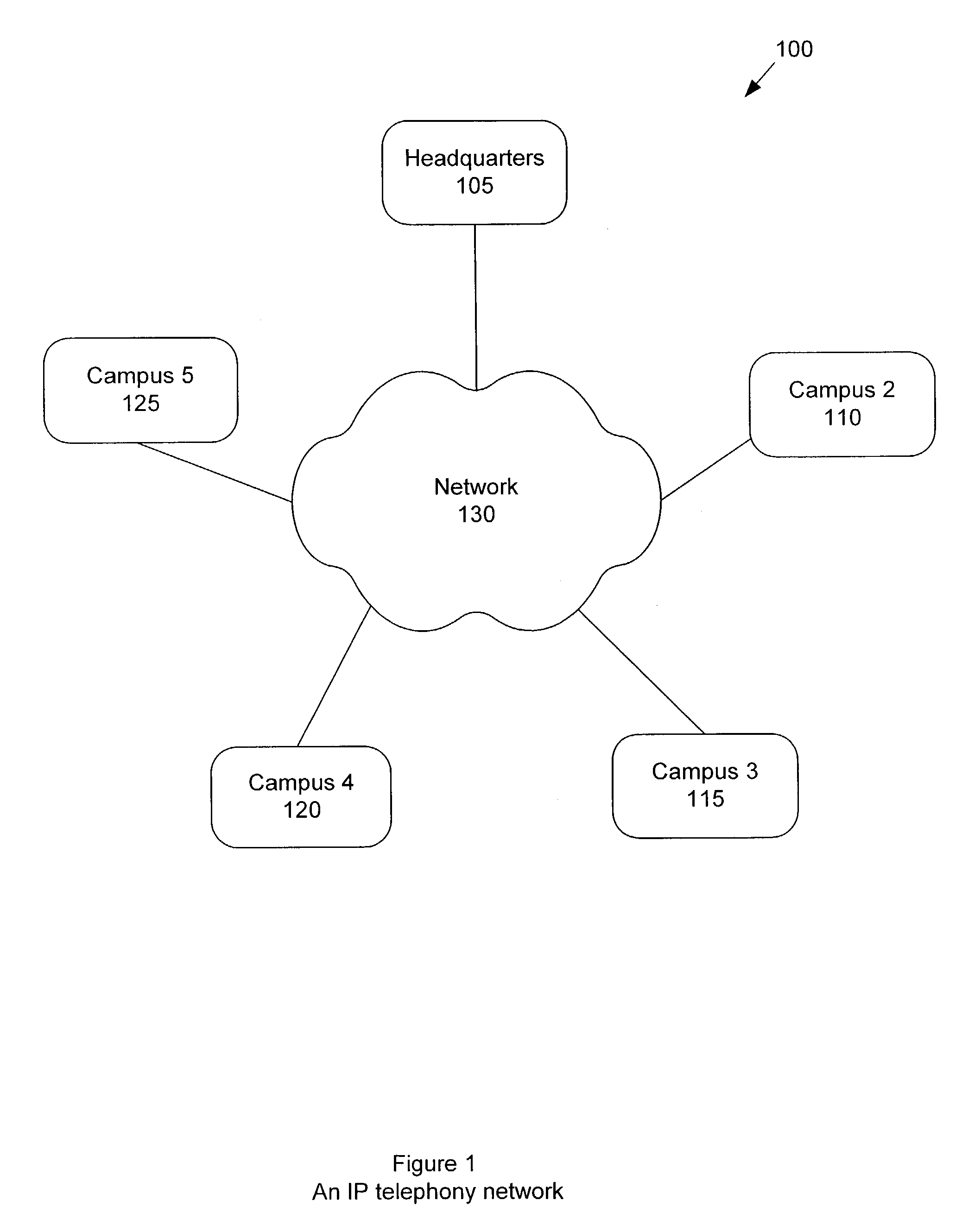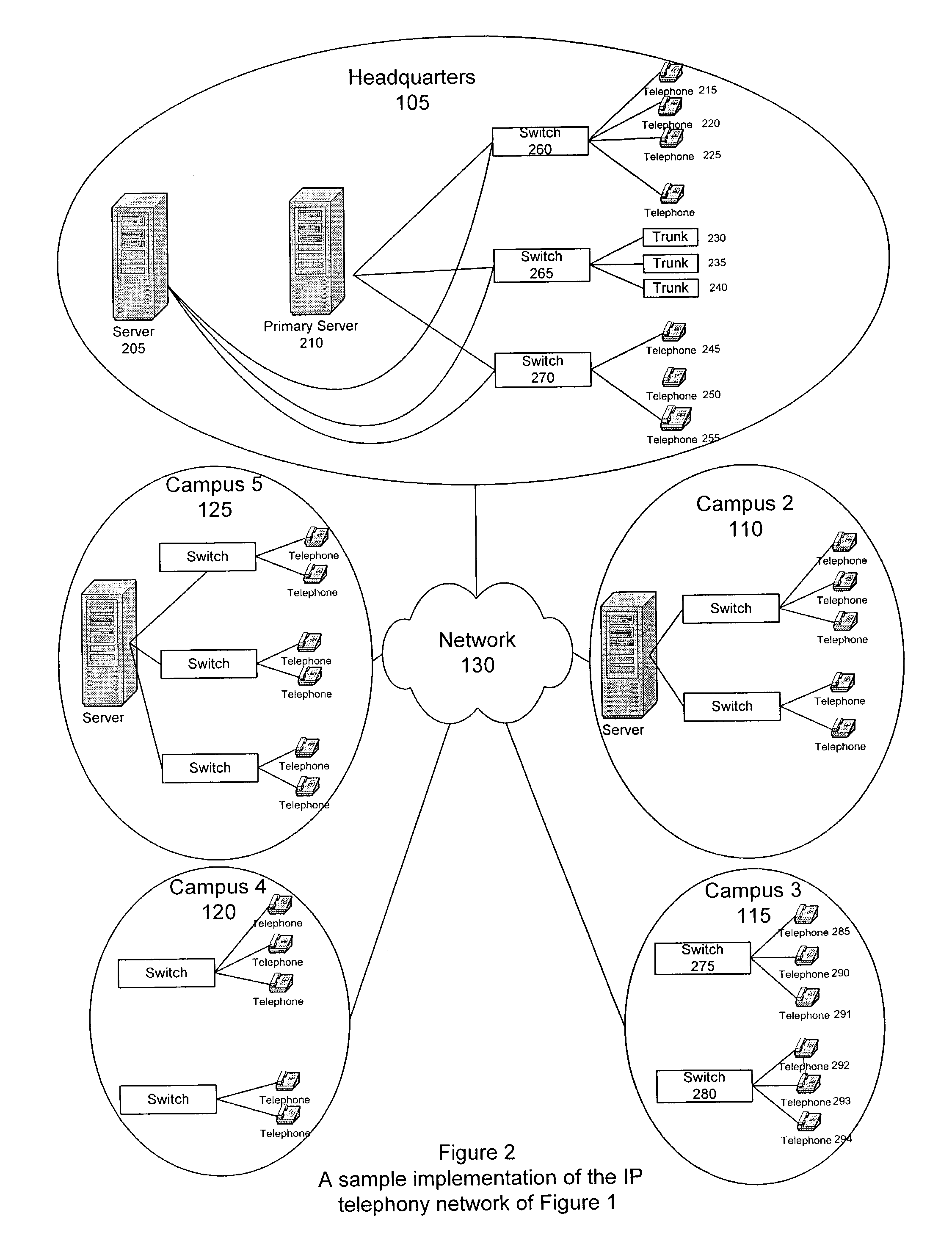IP telephony network using a configuration map for organizing sites in a tree-like hierarchy
a configuration map and site technology, applied in the field of ip telephony network using a configuration map for organizing sites in a tree-like hierarchy, can solve the problems of network inability to scale, network bottlenecks, time and resource consumption, etc., to achieve scalable and robust system, efficient and easy-to-use effects
- Summary
- Abstract
- Description
- Claims
- Application Information
AI Technical Summary
Benefits of technology
Problems solved by technology
Method used
Image
Examples
Embodiment Construction
[0057]FIG. 1 is a block diagram illustrating a sample IP telephony network 100 that has five sites, 105, 110, 115, 120 and 125, called “Headquarters,”“Campus 2,”“Campus 3,”“Campus 4” and “Campus 5” respectively. Each site 105, 110, 115, 120 and125 is connected to a network 130 which may be the Internet, WAN, LAN or other network known in the art.
[0058]FIG. 2 is a sample implementation of the IP telephony network of FIG. 1, shown in more detail. The headquarter site 105, for example, is composed of a server 205, a primary server 210, three switches 260, 265 and 270, seven telephone extensions 215, 220, 225, 245, 250 and 255 and three trunks 230, 235 and 240. Campus 3115, on the other hand, is composed of no servers, two switches 275 and 280 and six telephone extensions 285, 290, 291, 292, 293 and 294. Each extension or trunk is connected to a switch, and each site is coupled to the network. Each extension, trunk, switch and server is located at a site in the network. A site may or ma...
PUM
 Login to View More
Login to View More Abstract
Description
Claims
Application Information
 Login to View More
Login to View More - R&D
- Intellectual Property
- Life Sciences
- Materials
- Tech Scout
- Unparalleled Data Quality
- Higher Quality Content
- 60% Fewer Hallucinations
Browse by: Latest US Patents, China's latest patents, Technical Efficacy Thesaurus, Application Domain, Technology Topic, Popular Technical Reports.
© 2025 PatSnap. All rights reserved.Legal|Privacy policy|Modern Slavery Act Transparency Statement|Sitemap|About US| Contact US: help@patsnap.com



